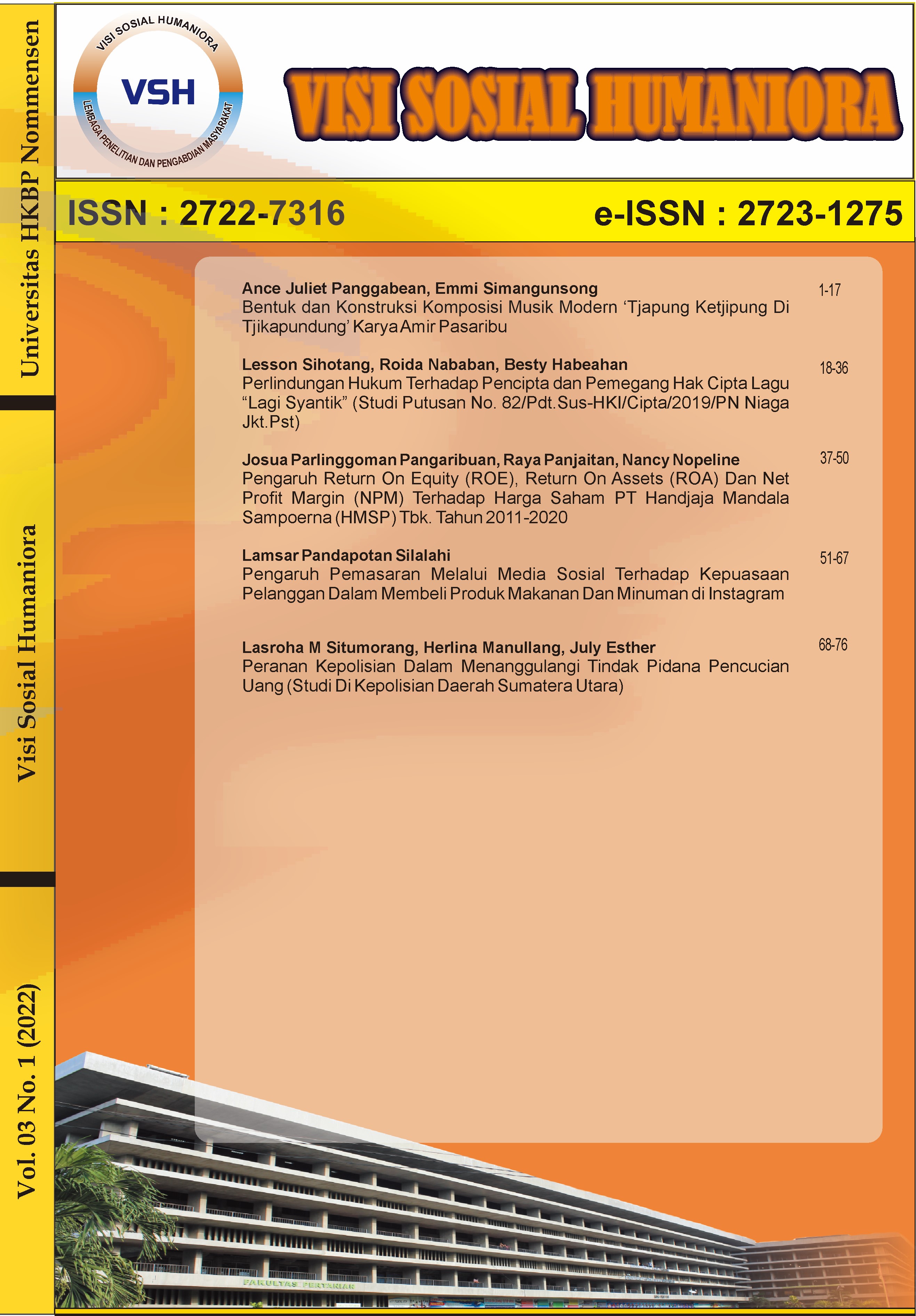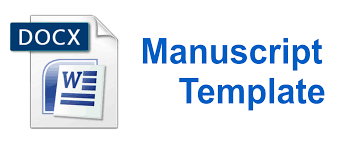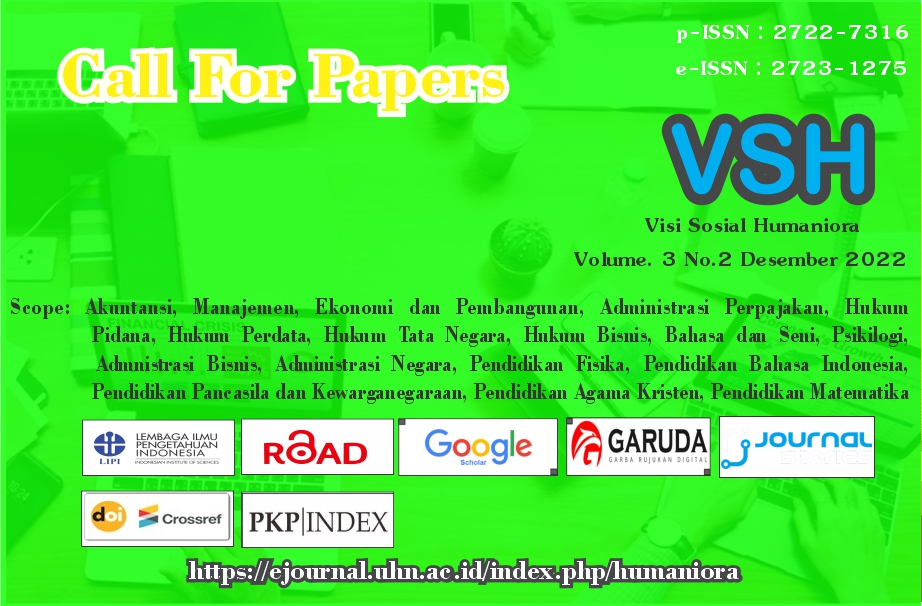Analisis Strategi Pengembangan Kompetensi Pegawai Pada Badan Kepegawaian Dan Pegembangan Sumber Daya Manusia Kabupaten Nias Utara
DOI:
https://doi.org/10.51622/vsh.v5i2.2620Keywords:
Employee Competency Development.Abstract
Developing employee competency is crucial in improving the quality of public services. In the era of globalization and increasingly fierce competition, local governments are required to have superior human resources and be able to adapt quickly to change. Therefore, employee competency development strategies are very important to ensure the achievement of organizational goals in providing excellent service to the community. The variables in this research consist of 1 (one) single variable, namely: A single variable is a variable that only has one dimension or category.
This variable only has one value or attribute for each unit of analysis. According to Sugiyono (2017: 39), research variables are "all attributes, traits, values of people who have certain variations determined by researchers to be studied and then drawn conclusions". The following is an analysis of research results obtained from observations and in-depth interviews regarding employee competency development at the Personnel and Development Agency.
North Nias Regency Human Resources. This research was carried out carefully, paying attention to the location and time that had been optimally arranged. Apart from that, researchers also met directly with informants to obtain more accurate data. The results of this research were obtained through data collection techniques in the form of interviews and observations. This technique was chosen to obtain natural data. The interview structure designed by the researcher is not standard, so that if the answers given by the informant are not clear, the researcher will ask additional questions to deepen and clarify the information provided by the informant.
This research aims to analyze employee competency development strategies at the North Nias Regency Personnel and Human Resources Development Agency (BKPSDM). The research results show that: BKPSDM has implemented various competency development strategies, such as training, formal education, and job rotation. However, there are still several obstacles that need to be overcome, such as budget limitations, lack of employee interest, and a less than optimal evaluation system. Therefore, it is necessary to improve and refine existing competency development strategies, as well as develop new strategies that are more effective and efficient. The factors that influence the successful implementation of the employee competency development strategy at BKPSDM North Nias Regency have been implemented well, so that employees experience an increase in their ability to carry out their duties.
Downloads
References
Anoraga, Pandji, (2019). Manajemen Bisnis, Rineka Cipta, Jakarta
Arifhan Ady Dj & Wahdaniah (2022). Bussman Journal: Indonesian Journal of Business and Management p-ISSN : 2797-9725 | e-ISSN : 2777-0559 Vol. 2 No. 1 Januari - April 2022.
Arikunto, Suharsini, (2017). Prosedur Penelitian Suatu Pengantar, Bina Aksara, Jakarta.
Armstrong, M., & Taylor, S. (2020). Human Resource Management Practice. London: Kogan Page.
Assauri Sofjan, (2010). Manajemen Pemasaran, Rajawali Press, Jakarta
Boxall, P., & Purcell, J. (2021). Strategy and Human Resource Management. London: Macmillan International Higher Education.
Boyatzis, R. E. (2018). Competencies in the 21st century. Journal of Management Development, 27(1), 5-12.
Davis, M. (2023). Evaluating the Effectiveness of Competency Development Initiatives. International Journal of Training and Development, 27(4), 321-335.
Dessler, G. (2020). Human Resource Management. New York: Pearson.
Effendi, Tadjuddin Noer, (2019). Sumber Daya Manusia, Peluang Kerja dan Kemiskinan, Rineka Cipta, Jakarta
Fathoni, Abdurrahman, (2016). Manajemen Sumber Daya Manusia, Rineka Cipta Jakarta.
Faustino, Cardoso Gomes, (2012). Manajemen Sumber Daya Manusia,: Andi, Yogyakarta
Jansen, M. (2023). Integrating Competency Development with Strategic Organizational Goals. Harvard Business Review Press.
Jenerson, Patonengan (2021). Jurnal Ilmu Pemerintahan Suara Khatulistiwa (JIPSK); ISSN 25280-1852, e-ISSN: 2721-0537; Akreditasi Jurnal Nasional Sinta 5; Vol VI, No.02, Desember 2021.
Jones, P. (2021). "Measuring the ROI of Competency Development Programs." Journal of Human Resources Management, 15(2), 45-60.
Kadir. (2019). Statistika Terapan: Konsep, Contoh, dan Analisa Data dengan Program SPSS/Lisrel dalam Peneltian. Jakarta: PT Rajagrafindo Persada.
Li, Y., et al. (2020). "Technological Innovations in Employee Competency Development." International Journal of Training and Development, 24(3), 212-230.
Lupiyoadi, Rambat, (2018). Manajemen Pemasaran Jasa, Salemba Empat, Jakarta
Martoyo, Susilo, (2016). Manajemen Sumber Daya Manusia, BPFE, Yogyakarta
Maslow, Abram, (2013). A Theory of Human Motivation. Psychological Review.
Mathis, Robert L., & Jackson, John H. (2021). Human Resource Management: Essential Perspectives. South-Western Cengage Learning.
McClelland, David C. (2019). Testing for Competence Rather Than for Intelligence. American Psychologist.
Notohamiprodjo, Hadisuwarno. (2021). Metode Penelitian Kuantitatif, Kualitatif, dan Campuran. Pustaka Baru.
Prabu Mangkunegara, Anwar, (2013). Perencanaan dan Pengembangan Sumber Daya Manusia, Refika Dharma, Bandung.
Schaufeli, W. B. (2020). The Burnout Challenge: Managing People's Relationships with Their Jobs. London: Routledge.
Soedrajat, Setyo, (2014). Manajemen Pemasaran Jasa Bank, Ikral Mandiri Abadi, Jakarta
Soekanto, Teguh Sulistyo, (2020), Manajemen Sumber Daya Manusia : Konsep, Teori dan Pengembangan dalam Konteks Organisasi, Graha Ilmu, Yogyakarta.
Soekidjo, Notoatmodjo, (2013). Pengembangan Sumber Daya Manusia, Rineka Cipta, Jakarta.
Spencer, L. M., & Spencer, S. M. (2019). Competence at Work: Models for Superior Performance. New York: John Wiley & Sons.
Sri Hartati; Neni Alyani & Thiara Kurniati. (2022). Jurnal MSDA (Manajemen Sumber Daya Aparatur). Vol 10, No. 1, 2022, pp. 16-30 Webiste: http://ejournal.ipdn.ac.id/JMSDA/ DOI 10.33701/jmsda.v10i1.2506.
Sri Wahyudi, Agustinus, (2016). Manajemen Strategi, Aksara, Jakarta.
Sugiyono, (2017). Metode Penelitian Pendidikan : Pendekatan Kuantitatif, Kualitatif, R & D, Alfabeta, Bandung.
Suyanto, M. Suyanto, (2017). Marketing Strategy Top Brand Indonesia, Andi Offset, Yogyakarta
Syafi’i Antonio, (2011). Bank Syariah dari Teori ke Praktek, Cet. 1, Gema Insani, Jakarta
Syamsul Effendie & R. Widodo Tri Putra. (2024). The Journalish: Social and Government; http://thejournalish.com/ojs/index.php/thejournalish/index. Volume 5 Nomor 1 Maret 2024: The Journalish Hal. 001-010.
Thoha, Miftah, (2015). Manajemen Kepegawaian di Indonesia, Kencana, Jakarta.
Tjiptono, Fandi, (2020). Strategi Pemasaran, Cet. Ke-II, Andi, Yogyakarta
Ulrich, D. (2021). Reinventing the Organization: How Companies Can Deliver Radically Greater Value in Fast-Changing Markets. Boston: Harvard Business Review Press.
Wahyu Saputra Basri & Ayu Widowati Johannes (2022). Jurnal Ilmiah Administrasi Pemerintahan Daerah Vol. 14 No. 1 pp. 36-52 Website: https://ejournal.ipdn.ac.id/JAPD. ISSN: 1829-5193, e-ISSN: 2615-3351 DOI:https://doi.org/10.33701/jiapd.v14i1
Published
How to Cite
Issue
Section
Copyright (c) 2024 Agus Ratna Mawarni Harefa; Syah Abadi Mendrofa, Yamolala Zega, Sukaaro Waruwu

This work is licensed under a Creative Commons Attribution-ShareAlike 4.0 International License.












